cURL error 35: OpenSSL SSL_connect: SSL_ERROR_SYSCALL in connection to feeds.afterdawn.com:443
Or try one of the following: 詹姆斯.com, adult swim, Afterdawn, Ajaxian, Andy Budd, Ask a Ninja, AtomEnabled.org, BBC News, BBC Arabic, BBC China, BBC Russia, Brent Simmons, Channel Frederator, CNN, Digg, Diggnation, Flickr, Google News, Google Video, Harvard Law, Hebrew Language, InfoWorld, iTunes, Japanese Language, Korean Language, mir.aculo.us, Movie Trailers, Newspond, Nick Bradbury, OK/Cancel, OS News, Phil Ringnalda, Photoshop Videocast, reddit, Romanian Language, Russian Language, Ryan Parman, Traditional Chinese Language, Technorati, Tim Bray, TUAW, TVgasm, UNEASYsilence, Web 2.0 Show, Windows Vista Blog, XKCD, Yahoo! News, You Tube, Zeldman
AfterDawn.com
Daily updated technology newsNew Qualcomm chip gives smartwatches 2x performance, 50% more battery life 20 Jul 2022, 7:15 pm

In their documentation, the company has focused on the superior, in what they call the "most advanced leap yet", the Snapdragon W5+ Gen 1 chip, which is the one that you'll see on many of the upcoming Wear OS smartwatches. The featured chip is a successor to the wide-adopted Snapdragon Wear 4100+ platform, and offers upgrades throughout the device.
The regular W5 Gen 1 is aimed at segment-specific devices, which can be found in kids toys, health equipment, or enterprise solutions. Although undoubtedly an important part of Qualcomm's wearable business, the chip is less of a consumer product.
Smaller transistors, better battery life
The most important improvement upon the previous generation has been made in the battery life and power management department.
Indeed massive leaps have been made in the transistor process, the SoC is now produced with a 4 nm technology, compared to the 12 nm process of the predecessor. This means that the transistors are smaller, and with a smaller footprint you'll get a more efficient chip, and ultimately better performance and battery life on the end product.
The Snapdragon W5+ Gen 1 also introduces a brand-new SoC schema, including two very different system-on-chips for different tasks.

The hybrid SoC has two separate chips for ambient and interactive use.
The powerhouse of the hybrid chip is the Snapdragon SW5100 that has four Cortex-A53 cores and takes care of the hard work, while the co-processor with a single Cortex-A55 core is on ambient, always-on duty.
This with the addition of an improved power management IC combines to a whopping up to 50 percent better battery life.
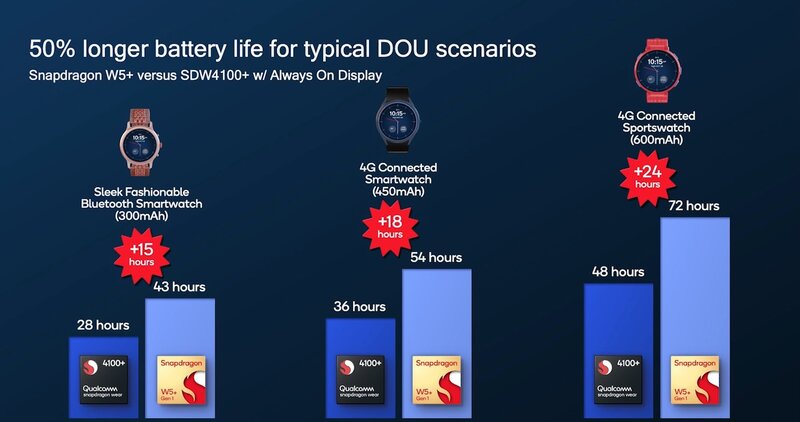
Snapdragon W5+ Gen 1 offers 50% better battery life in all form factors.
Improved performance
Pure horsepower comes from the SW5100, which has a similar quad-core CPU with Cortex-A53 cores as its predecessor, but at a lower 1.7 GHz clock speed. However, instead of the single Adreno 504 GPU of the last generation, there's two Adreno 702 GPUs.
The performance you lose on the CPU front, which are nigh nonexistent, are gained many times over by the major GPU upgrade.
Qualcomm says the performance has been doubled, although that's as far as the go about benchmarking. And to be fair, gaming isn't exactly the most popular use case for smartwatches.
This also leads us to believe that the gains are not necessarily always measured in speed or points, but rather in experiences that are more immersive, thanks to better graphics capabilities.

Better performance manifests in richer user experience.
The same goes for the new co-processor that makes sure that the always-on experience is more enjoyable with a dedicated audio unit for continuous music, ambient sensor data, always-on display, and more.
This allows things like acceleration and gyro data for sports apps, heart rate monitoring for health and wellness apps, and low-latency fall detection.
While these aren't necessarily all new features, they've been improved with the introduction of the more efficient and powerful hybrid chip design.
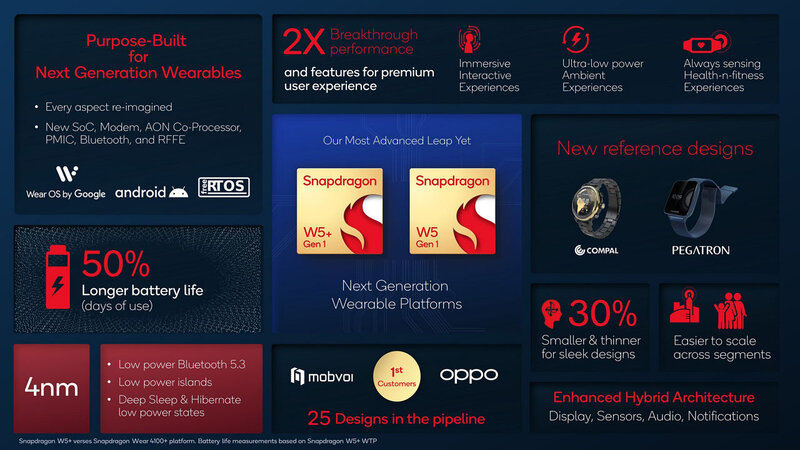
Summary of W5+ Gen 1 improvements.
The upcoming W5+ Gen 1 smartwatches
Snapdragon W5+ Gen 1 will be shipping to new smartwatches later this year, but what are those going to look like?
The PCB is 40 percent smaller and 30 percent slimmer, which means you are likely to see much sleeker Wear OS devices in the near future.
Snapdragon W5+ Gen 1 supports Bluetooth 5.3, which has lower power consumption, supports location and positioning data, and more security and less interference-prone connections. Also there's now support for WiFi and GNSS positioning.
Qualcomm has revealed that the first watches to feature the new chip are OPPO's Watch 3, due in August, and the successor to Mobvoi's TicWatch 3. There's at least another 23 smartwatches with Snapdragon W5+ Gen 1 currently in development, many of which will likely launch later this year or early next year.
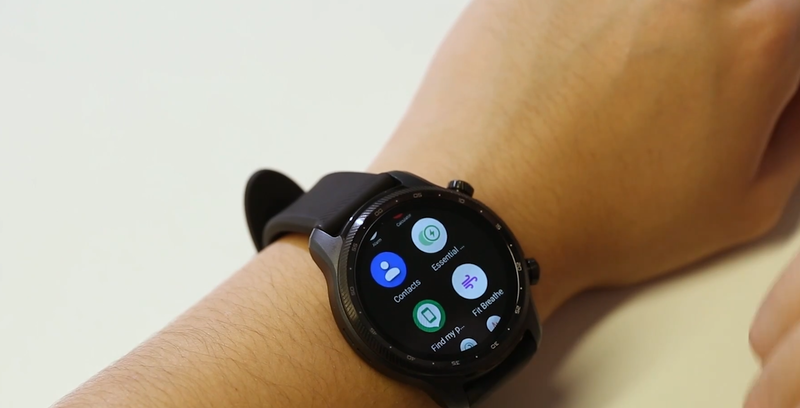
App spending overtook games first time ever on the App Store 19 Jul 2022, 12:20 am

The report details customer spending on mobile platforms between April 1 and June 30, 2022, and concludes, among other things, that due to the stagnation of game spending, apps have taken the spot for the most revenue generated in the second quarter of the year as it relates to the U.S. App Store.
The app store ecosystems of Apple and Google combined a total of 35 billion downloads, which was a minor, although telling, year-over-year decline of 2.5 percent. App Store declined 1.3 % from 7.9 to 7.8 billion, and Google Play 2.9 % from 28 to 27.2 billion.
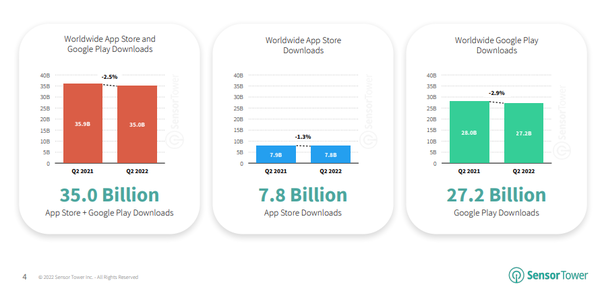
In terms of the App Store, the first year of the pandemic created a fertile ground for game developers, and the growth jumped from 20 to 30 percent to nearly double, 35 to 55 percent. However, after the early pandemic, games spending winded down and recently pulled the overall app spending into first year-over-year decline.
This also meant that apps overtook games in spending on Apple's platform. TikTok retained its position as the number one on the App Store, followed by video-editing software CapCut, competitors Google Maps and YouTube, and an array of social media apps.

On Google's platform, the most downloaded app was Facebook, with Instagram, TikTok, WhatsApp, Snapchat, and Messenger following. TikTok also remained as the overall number one, with Facebook-owned trio, Instagram, Facebook, and WhatsApp, in succession.

Sensor Tower notes that non-game apps are now accountable for much of the growth in U.S. app stores. Since 2014, the spending on non-games has had a compound annual growth rate of 40 percent compared to sub-20 percent for games.
Game spending on Google Play increased 0.6 percent year-over-year to $11.9 billion, which is only slightly below the high of $12.4 billion in Q2 2020 when the pandemic surge was the strongest.
The differences between the two platforms might be a result of market differentiation. The App Store is very U.S. and China-centric, while Google Play gets the bulk of their downloads from markets like India, Brazil, and Indonesia.
However, it's clear that travel, airline, and event apps have revitalized the app market after the pandemic. Travel apps achieved a new all-time high in both the United States and United Kingdom, airline apps are up over 30 percent compared to pre-pandemic, and the five most popular ticketing apps gained 70 percent more downloads since Q2 2019.
According to Sensor Tower data, the travel and airline apps have nearly caught up the growth trajectory they were before the pandemic. In fact, in the UK the top 5 airline apps have now completely caught up with the pre-COVID pace.
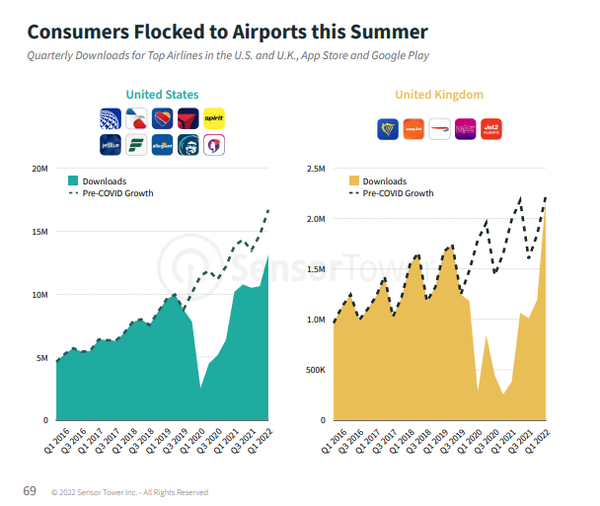
Another major factor to app spending increase was the popularization of the subscription model. In the U.S. App Store alone 400 apps, eight times as many as in Q2 2016, had more than $1 million in consumer spending, of which a vast majority were primarily subscription apps.
Even if in the grand scheme of things games have been in a decline or stagnated, depending on the timeframe, there have been some massive successes recently. Subway Surfers, recently acquired by Swiss developer Miniclip, has dominated the game listings since 2014 with more than 1.8 billion downloads. It resurfaced as the number one game in Q2 2022 with a highest total downloads since 2014 as recorded by Sensor Tower data.
It was the No. 1 download in the U.S., Europe, Middle East, Africa, and Oceania, only to be left second in South America, and third in Asia.
You can find more data, region-specific graphs, and other insights from the Sensor Tower's Q2 2022 Data Digest here.
The Genesis of Nothing 15 Jul 2022, 8:16 pm

However, to understand Nothing, and the recently announced first smartphone of theirs, we must investigate the origins of OnePlus. This isn't some sort of theoretical mathematics conundrum, instead it is a guide to the inner workings of Carl Pei's new company.
After all, OnePlus is the spiritual progenitor, albeit maybe not the direct ancestor, of Nothing Technology Limited.
OnePlus and Pei
OnePlus was founded in Shenzhen in 2013 among hundreds of tech startups in what were the gold rush years of Chinese technology build-up. While many of them were doomed to mediocrity, OnePlus seemed to possess something most didn't: a willingness to dream big.
The company was founded by Pete Lau, an industry veteran in hardware engineering and marketing, and Carl Pei, a relative newcomer who had a vision to offer. Carl Pei had worked a few months for the once great Finnish phone manufacturer Nokia, but the bulk of his experience came after he started working for the Chinese smartphone manufacturers.
After a short stint at Meizu, he found his way under the wing of then Oppo VP Pete Lau. There the duo drafted a plan for world domination.
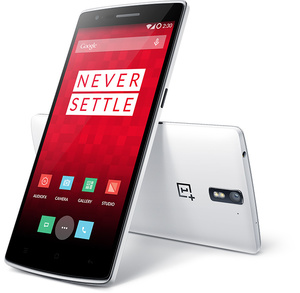 OnePlus One was an enormous success for the young start up.
OnePlus One was an enormous success for the young start up.The first product of the company was the OnePlus One, a smartphone that would offer many of the features of the flagship phones with half the price. The "Flagship Killer" was a nich� product but in the smartphone enthusiast and hobbyist circles, and media, it garnered attention way above its weight class.
The phone was a solid smartphone, and most definitely priced right at under $300, but what made it stand out was the marketing, which in some respects annoying many. In the coming years this would become more evident, as the company grew and the products became more mainstream-friendly.
No company had taken advantage of pre-release teasers like OnePlus did, and their releases always seemed to have more fanfare around them than much bigger competitors with marketing budgets that dwarfed the little startup.
The decline and departure
Unfortunately for OnePlus, the company was the victim of its own success. The premise was flawed all along, and you couldn't make a mainstream product while retaining the enthusiasts. Being nich� and mainstream at the same time is, after all, an oxymoron. World domination wouldn't be possible, and in China the competition was much more fierce.
OnePlus isn't a publicly traded company, and there's no real way of knowing how well they were, and are, doing. Especially since they are a small part of a conglomeration of Chinese technology companies, of which Oppo is one. But the public perception, especially as expressed by the media and enthusiasts, was declining considerably, perhaps as early as in the coming years after the revered OnePlus 5 was released in 2017.
In fact, in the release pitch of the OnePlus 5, Carl Pei introduced the phone's specs, which were undoubtedly competitive to say the least, as "the least interesting part of the product." This seemed to be more of a Pei's own opinion rather than OnePlus' official agenda.
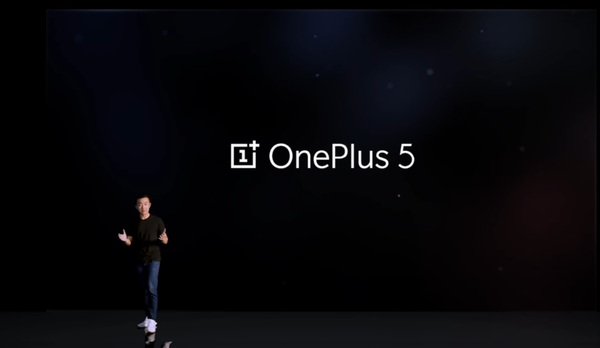
Carl Pei introducing the OnePlus 5 in 2017.
The company pivoted to develop more products that were less and less unique and lacking in marketing appeal, and while Pete Lau's hardware know-how and the company's manufacturing relations in Shenzhen as well as strong carrier alliances in Europe would keep OnePlus as one of the household Android names, there wasn't much there for Carl Pei.
By October 2020, Carl Pei had left the company, and while he didn't acknowledge the reason for his departure, it seemed clear that the man would become a competitor to the company he once founded.
Carl Pei is Nothing
The last few years Carl Pei spent as the marketing lead of OnePlus seemed to amount to nothing. However, the period was undoubtedly the building blocks of Nothing. One can imagine that the frustration of not being excited about the products you present and represent as the figurehead of the company fueled the late lights he drafted the blueprints for his new upstart.
Quickly after Pei announced the new venture it was compared, rather unsurprisingly, to OnePlus as well as the likes of Essential, a defunct smartphone company founded by the original Android founder Andy Rubin. Incidentally, Nothing ended up purchasing rights to Essentials intellectual properties in early 2021.
Nothing resembles Carl Pei more than OnePlus ever did, as it should considering he is the sole founder. The focus is more on the design and marketing of the products, although Pei has stated that it's as all about accessibility of the technology.

Hardware (read: specs) aren't as important as they previously were, although with the see-through design you can see deeper in to the heart of the device. According to at least the first two products, Nothing isn't here to offer specs out of this world; there's no flagship killing involved.
One thing is for sure: Nothing has a definite uniqueness that was distinctly lacking in OnePlus during the latter half of his reign, and still does. The see-through design with lit Glyph interface on the back is eye-catching, to say the least.
This time around Pei believes that he can conquer the world, too � be a global brand. Even though OnePlus was more global than most of its local siblings, it was too focused on the Chinese market for the Swedish-grown Pei.
While being a truly recognized brand in the Western Hemisphere might be plausible for Nothing, it's doubtful that world domination in a Samsung-esque way will be achievable � and that's a good thing.
Read also: Nothing announced their debut smartphone
Nothing announced their debut smartphone 14 Jul 2022, 8:11 pm
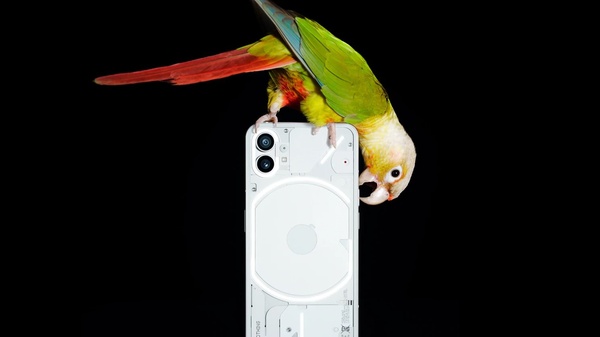
To get the dull specifications out of the way, the phone features a mid-range Snapdragon chip, Snapdragon 778G+, a 6.55 inch Full HD+ panel with 120 Hz refresh rate, 8 or 12 gigabytes of RAM, and 128 or 256 gigabytes of UFS 3.1 storage.
The two cameras on the back include a 50 MP f/1.88 Sony IMX766 sensor, found also in the similarly priced OnePlus Nord 2, and a 114-degree and 50 MP Samsung JN1 ultrawide sensor.
The latter should be a quality sensor for a wide angle camera, and includes support for Samsung's 4-to-1 pixel binning technology. Selfie camera is a single 16 MP Sony IMX471 sensor, nothing to write home about.
Other specs include a 4500 milliamp hour battery that supports both 33-watt wired charging and 15-watt wireless charging. As an environmentally conscious company, Nothing doesn't ship a charger with the phone. Thanks, Apple.
Now to the more interesting stuff.
Distinct Nothing design
The design of the phone, which is the bread and butter of Carl Pei, is something to behold. This specific see-through aesthetic has never been done, and even though there have been some attempts at geeky see-through casings, mostly cringy third-party ones mind you, Nothing has created something original and refreshing.
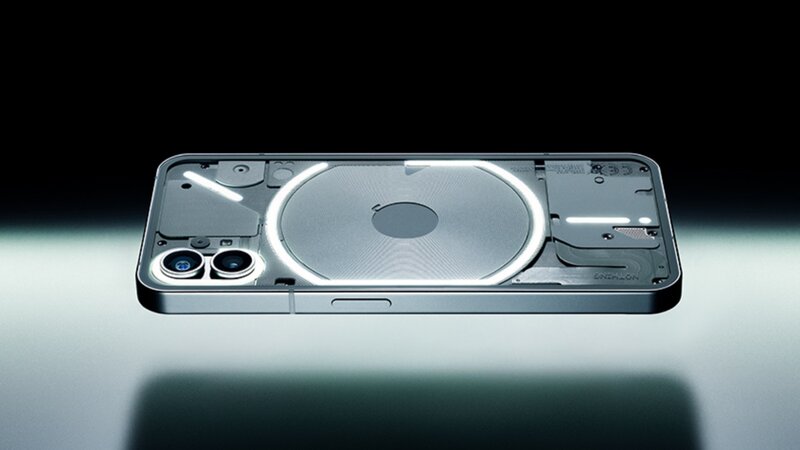
Glyph interface, the programmable lighting arrangement on the back of the phone, can be used to correspond to specific actions. The LEDs light up in the rhythm of your favorite ringtone, give a silent and buzzless notification, or display the stage of your charging battery.
There's a greater promise for this feature, if Nothing keeps developing new Glyph applications, and even giving the keys to third-party developers and users to explore.
The design really speaks for itself, and is something you wouldn't want to hide with a case. It is most definitely a conversation starter.
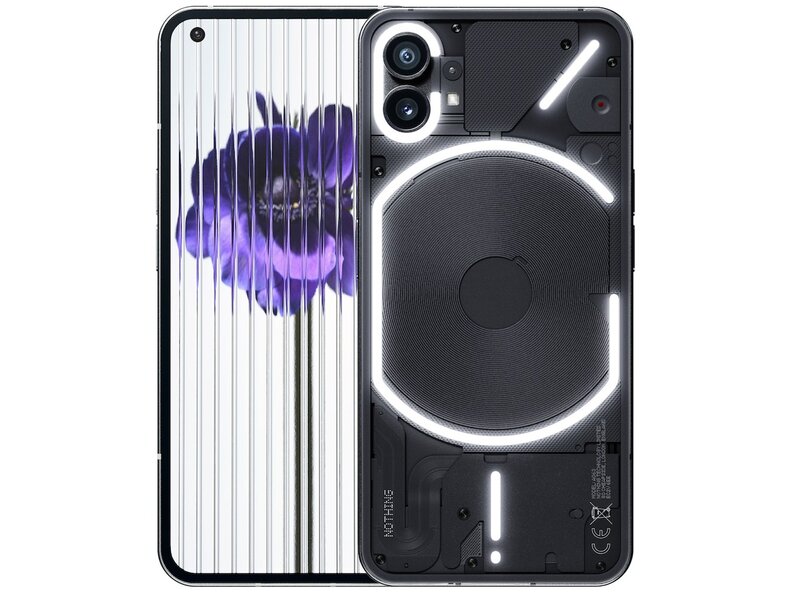
While some of its inner workings are on display due to the see-through back panel, albeit showing mostly painted component cover plates, some things are hidden from sight to compliment the clean aesthetic. The fingerprint sensor is hidden under the display, and even the stereo speakers do not disrupt the symmetrical front panel surrounded with an aluminum frame.
Even the software is untarnished by unnecessary third-party applications, says the company. The experience is provided by a proprietary Nothing OS built upon a pure Android 12. Nothing promises at least four years of security updates and three major Android updates for the device.
The phone's futuristic design will be available in two color options, black and white.
The aforementioned RAM and storage options start in Europe at 499 euros, which is likely to be the U.S. starting price, when Nothing makes it official here in the States hopefully in the coming months if not weeks.
Russia introduces new 100 rouble bill - but you can't get it from ATMs or to pay with it 1 Jul 2022, 5:39 pm

Russian Central Bank officially introduced the updated 100 rouble bill today. The bill shows a Soviet Soldier Memorial as its main image and bill is supposed to replace the previous 100 rouble bill currently in circulation.
But there's a small problem with all that: you can't withdraw the new bill from ATMs and you can't pay with it in stores.
And why is that? Because ever since Russia launched its attack against Ukraine, Western companies have refused to deliver any technology to Russia. And it just happens to be that 60 percent of all Russian ATMs are made by Western companies and whopping 100 percent of all the cash registers in the country are made by Western companies.
Thus, in order to get the new bill into circulation, the ATMs and cash registers need to be updated in order to recognize the new bill. And Western manufacturers simply wont do that due the sanctions against Russia. Even banks refuse to take the bill, as they don't have updated hardware to detect fake bills from authentic ones.
So, new paper money theoretically exists, but it can't be used.
The fact was actually officially announced by Russian Central Bank itself in its recent press release (link in Russian).
Sony announces new gaming brand, Inzone, with displays and headsets 29 Jun 2022, 8:42 pm

Sony's obvious plan is to challenge the Asian electronics competitors that have already created their own gaming brands, and in many cases sold branded gear for years, even decades.
These companies include the likes of Asus with their Republic of Gamers that was brought about as early as in 2006. The brand has become one of the company's most valued possessions, and spans across computer hardware like motherboards all the way up to more mainstream gaming gear like headsets and even gaming-focused smartphones.
Others, like Lenovo with their Legion line of devices and Acer with Predator offer similar lineup of products, including but not limited to laptop and desktop computers, monitors, gaming mice and keyboards, and headsets.
While the range of devices in the gaming gear market is expansive, Sony has decided to enter it in a careful manner with just a few products that are to be released this summer.
Inzone displays
As one of the most influential gaming-related computer hardware, and also a very important part of Sony Electronics' history, the company has decided to produce a monitor for the gamers. Sony is of course known for its quality display production ever since the CRT times, and while is no longer the powerhouse of the 90s and early aughts the company is still producing some of the best TV screens and professional monitors around.
The new lineup of gaming displays includes a flagship 4K monitor dubbed Inzone M9 and a lower-tier Full HD gaming monitor, Inzone M3.
The former features an IPS panel with aforementioned 4K resolution and 120 Hz refresh rate with support for variable refresh rate (VRR). The monitor supports HDR content with DisplayHDR 600 certification, offers 95% coverage of the DCI-P3 color gamut, has high contrast with Full Array Local Dimming, and provides an impressive 1 millisecond gray-to-gray response time for fast-paced gaming.

Sony Inzone M9 from different angles.
The Inzone M3, on the other hand, is a gaming monitor with a Full HD resolution with DisplayHDR 400 certification, with the same 27-inch panel size. It doesn't offer quite the same color precision or picture quality but some of the more important aspects for gamers, like VRR and G-Sync support, are there.
While the Inzone M3 is a lesser product in some respects, it does provide a better 240 Hz refresh rate that might be especially useful in first-person shooters or other games relying on the fastest of reflexes.
Both of the models offer a low depth tripod construction on the stand, as well as cable management, which Sony says creates a comfortable user experience as well as plenty of room for peripherals and overall desk space. For gamers that like to use the keyboard in an angle and/or large mousepad, the small footprint makes sure that the stand is not in the way.
The stand also has height and tilt adjustments that are important for the ergonomics. Purely for aesthetics, the M9 also offers rear-lighting.
The M9 is also designed to work especially well with the PlayStation 5. It features Auto HDR Tone Mapping which automatically recognizes and sets the HDR settings. Also it can automatically change VRR settings and picture modes depending on the content that you are either watching or playing.
The Inzone M9 has a MSRP of $900 and the Inzone M3 can be purchased with a much more affordable $530. The former should become available during the summer, the latter some later time in 2022.
Gaming headsets
Sony is also the creator of some of the most impressive head-mounted audio hardware ever, so it's natural that this is the second area of gaming gear the company decides to pursue with the new brand. Expertise from studio headphones to arguably the best series of wireless ANC headphones is probably going to help you achieve pretty impressive gaming headsets, too.
The Inzone brand is going to be initially launching three separate products, called Inzone H9, Inzone H7, and Inzone H3.
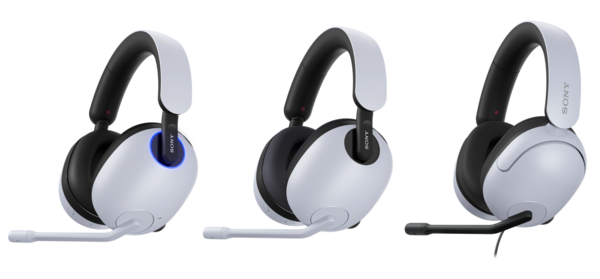
From left to right: Inzone H9, Inzone H7, and Inzone H3.
As you might have guessed, the H9 is the flagship product. It is a wireless gaming headset with noise canceling and 360 Spatial Sound support. According to Sony their proprietary 360 degree sound technology allows the gamers to create a more precise picture of their virtual surroundings and have better spatial awareness.
In addition to the noise canceling option the headphones can also be used in ambient noise mode, which means that it reproduces the ambient sound around the gamer. This allows you to hear the surroundings easier with your headphones on.
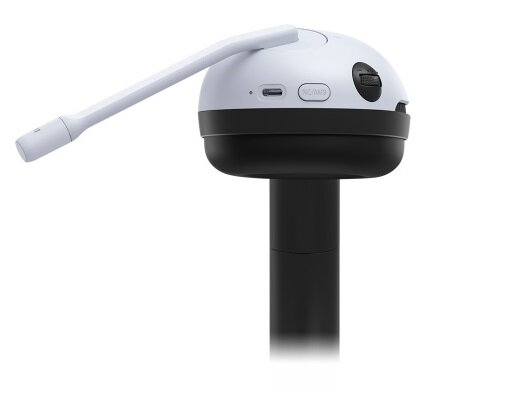
The NC and Ambient buttons on the Inzone H9.
The Inzone H9 offers up to 32 hours of battery life, and with a 10-minute recharge you can get another one hour of gaming time.
The middle range option in Inzone H7 is a wireless headset that doesn't offer the noise canceling (or ambient sound) but provides an even better 40 hours of battery life.
Both the H9 and the H7 have diaphragms that are designed and shaped to reproduce extremely high frequencies with high compliance in addition to providing authentic lower frequencies. This is where Sony's long-standing expertise in quality headphones should give them an edge.
The least of the three, the H3, are a more traditional wired gaming headset that do not have to worry about battery life but also don't offer many of the fancier features of its elder brethren.
As with the M9 monitor, the H9 and H7 headsets provide some interoperability perks for PS5 owners. The two headsets support changing of settings via the PlayStation 5 Control Center straight from their headsets. This includes the likes of changing the game audio and voice chat volume.
As for pricing, the flagship H9 costs $300, the H7 $230, and the H3 $100. All are now available for pre-order and will be officially released in just a week, on July 7th.
Internet Explorer finally dies, after 27 years 14 Jun 2022, 8:04 pm

Microsoft released the first version of IE back in 1995. But it wasn't until the turn of the millennium when the browser finally managed to become the most popular web browser in the world.
Partially that success was because of Microsoft's shady tactics, like bundling IE tightly with its Windows operating system. But partially, the reason was also due the fact that back then, IE was simply a faster and more nimble browser than the previous #1, Netscape Navigator.
IE quickly solidified its top position, despite the arrival of open source contender, Firefox. Firefox never manager to get past IE in terms of global popularity and IE became quickly de facto browser during the first years of 2000s.
Microsoft was so certain of its pole position that the company didn't even bother to do any major updates to its browser: Internet Explorer 6 was released in 2001, but it took over five years for IE7 to arrive.
That era when IE dominated is remembered with horror by many old-time web developers, as IE was notoriously bad at supporting any web standards, whatsoever. Basically during those years, web developers had to create two separate versions of their websites: one for everything else and one for IE only.
Finally, IE was overthrown by arrival of Google's Chrome browser. Chrome rapidly became the most popular browser in the world - and has managed to keep that position ever since.
Since those days, Microsoft has learned how to play nicely: company nowadays is an active member in web standards committees and company's current flagship browser, Edge, uses the same rendering engine Chrome does.
On Wednesday, 15th of June, 2022 Microsoft will finally end the support for the final version of Internet Explorer, IE11. After that date, Microsoft wont offer any patches or updates to the outdated browser and will focus solely on its Edge browser.
AfterDawn's 23rd birthday 10 Jun 2022, 8:59 pm

Yes, 23 years ago today, our site officially launched, back in 1999. Since those days, lots of things have changed - in technology, culture, our personal lives and Internet. But our site is still here, having survived all these years - good times and the bad ones.
I wont go over our history and our roller-coaster years now, as I've done so three years ago, extensively when our site turned 20 years old.
Again, I'd like to thank all of you who have supported our site over all these years. Thank you, everybody!
-Petteri Pyyny, CEO
AfterDawn Oy
P.S. Now, AfterDawn has existed over half of my life, which is kinda weird thing to think about..
End of an era: iPod discontinued - the device that revolutionized music industry 11 May 2022, 10:06 am

It also paved a way for new music industry revenue models by introducing legal and easy-to-use ways to purchase digital music. Since then, the digital music purchase model has died and been replaced by a streaming services, such as Spotify. But it was the iPod and Apple's music store that acted as catalysts for that transition.
Apple has already retired most of its iPod models, but the iPhone-like Apple iPod touch has remained in production. Until now.
Apple has announced that it will cease the production of iPod touch immediately and the device will be available through retail channels until the supplies last.
Tiny player that changed the entire world: Winamp is now 25 years old 26 Apr 2022, 9:13 pm
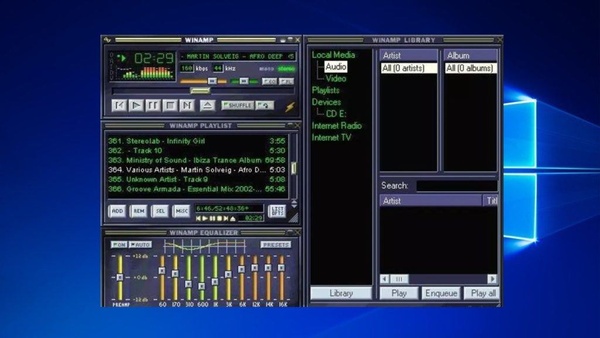
Legendary Winamp was arguably the first user-friendly audio player capable to play MP3 audio files. The very first version of Winamp was released back in 21st of April, 1997. So, it has been now 25 years since that event.
With hindsight, it is easy to see how various factors were in play back in those days. German tech institute Fraunhofer had developer the first digital audio file format that produced good enough quality with small enough filesizes.
CD-ROM drives were getting more and more popular, allowing people to transform their CD discs into digital MP3 files. And finally, along came the first MP3 player that made it easy and fun to manage massive music libraries - and not to hog your slow Pentium PC's all resources while doing all that.
Since those days, MP3 players have mostly vanished in favor of streaming services, such as Spotify. Even Winamp has been in hiatus for ages now - despite making a small comeback back in 2018 with its latest version.
But even Spotify and all other streaming services are standing on the shoulders of past giants. In this particular case, on shoulders of Winamp.
Android 13 beta released 26 Apr 2022, 8:56 pm

While the developer edition, launched back in February, was meant for .. well, developers, the new beta version is meant for all Android enthusiasts. Obviously, those willing to test the new OS are supposed to be users that can tolerate inevitable bugs, missing features and even data loss. But also for those who are willing to sacrifice such minor things in order to get a taste of the future.
Compared to the developer edition, Android 13 beta 1 doesn't cater much new to play with. Most notable changes involve the way media players work in Android.
In previous Android versions, if an app requires an access to files stored into the device, user must grant full permissions for the app to do so. With Android 13, app can specifically request access to only selected file types, such as images, videos or music - thus, mitigating the risk that the app could get into more sensitive data stored on the phone.
Another media related enhancement is for audio playback. Now Android can tell the app what output devices are available and which one of those the app could use. This should made it easier to add smart functionalities to media apps, like ability to choose the output device directly within the app (say, you might want to blast your Spotify playlist to your Bluetooth speaker while also having several other BT devices connected to your phone).
The new beta is available for supported Google Pixel phones and can be downloaded from here.
The actual, stable version of Android 13 is expected to launch in Autumn 2022. There is already a list of phones that will eventually get Android 13 update, so you might want to check if your current phone will get it.
List of Android Performance class 12 phones (updated) 26 Mar 2022, 2:26 pm
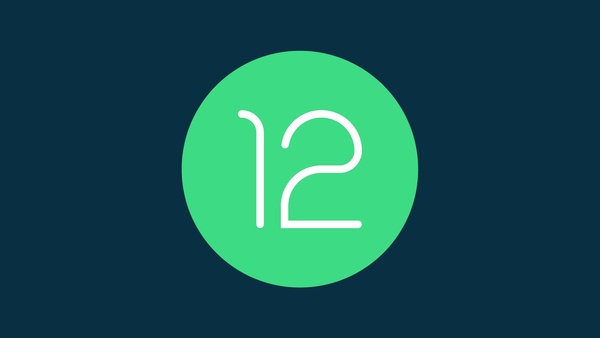
Previously, game and app developers had to to guessing on whether the phone user is using, is capable of running games in full detail or to have enough oomph for certain heavy-weight app features.
With the introduction of Performance class inside Android itself, app developers can simply check from the operating system if the current phone is deemed powerful enough.
Currently, the highest possible classification is Performance Class 12. So, a game developer might only allow highest graphic details available only to phones that are classified as Performance class 12 phones.
Some of the Performance class 12 criteria:
- at least 6GB of RAM memory
- at least 12 megapixel rear camera
- rear camera must be able to record 4K video @ 30fps framerate
- device must be initialize a video codec in less than 50ms, even when under heavy load
- when playing FullHD video, device must drop less than 1 frame every 10 seconds of playback video
- must have at least 400dpi pixel density on display
- at least FullHD display
- must have minimum of 4MP selfie camera, with FullHD @ 30fps recording capability
Just meeting the requirements on paper is not enough, the device must also pass the certification process in order to gain the classification.
List of Performance Class 12 phones
Currently, these phones are certified for the Performance Class 12:
- Google Pixel 6
- Google Pixel 6 Pro
- OnePlus 10 Pro
- OPPO Find X3 Pro
- realme GT 2 Pro
- Vivo X60 Pro+
- Vivo X70 Pro+
- Xiaomi 12
- Xiaomi 12 Pro
Notably absent from the list are Samsung's high-end phones, such as Samsung Galaxy S22 Ultra and company's foldable phones. Also, no Motorola phones in the list, at all.
Both manufacturers have phones that spec-wise should qualify, but companies haven't certified their phones. Thus, features like Snapchat's latest customizations wont work on those phones, as they rely on Performance Class 12 certification in order to work.
OnePlus 8 series finally gets stable Android 12 20 Mar 2022, 1:00 pm

OnePlus 8, OnePlus 8 Pro and OnePlus 8T started receiving Android 12 update as of yesterday.
According to OnePlus, the launch is phased, meaning that the full rollout of the OTA updates will happen in upcoming weeks, depending on region, model and carrier.
European users will have to wait a bit further, as the initial rollout is only for North American and Indian users. OnePlus cites "regulatory" issues for postponing the EU OTA slightly.
After Android 12 update, both OnePlus 8 and OnePlus 8 Pro should get one more major Android update: Android 13. And the OnePlus 8T will get two major Android updates after this one: Android 13 and Android 14.
After this 8 series update push, OnePlus' Android 12 update timeline still has some work to do: OnePlus 7 series and most of the Nord models are still stuck with Android 11.
Sony's surprise: Android 12 coming to Sony Xperia 10 II and Xperia 10 III 14 Mar 2022, 8:54 pm
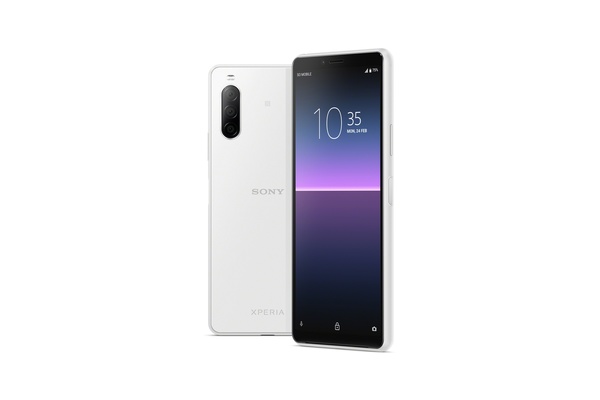
Sure enough, Sony has been quite fast with providing Android 12 updates to its two hign-end phone series: Xperia 5 and Xperia 1 series. As per current Sony's Android 12 update status, Android 12 has been already released to year 2020 and year 2021 high-end models.
But originally company promised only one major Android update to its mid-priced phone series, Xperia 10. Now it seems that they've decided to opt for a better-than-promised update coverage. Sony's mobile phone division announced on its official Instagram account that both Xperia 10 II and Xperia 10 III are getting Android 12 "soon".
That would be the second major update for year 2020 Xperia 10 II. None of the lists published so far have expected that particular model to bag Android 12.
So, maybe the trend Samsung is setting, is forcing other companies to improve their Android update game, too.
Loved by users, hated by Google: YT Vanced discontinued 13 Mar 2022, 9:35 pm
![]()
As YT Vanced app offers pretty much everything you could wish for for a YouTube app, it is also truly hated by Google. YT Vanced removed all the video ads from the player, but also uses crowdsourcing to detect sponsored messages by YouTubers - and allows skipping those, too.
It also allows background playback, thus, making it a viable Spotify alternative in order to play music from YouTube on your phone, without forcing to keep the player visible.
And the list of enhancements YT Vanced offers over official YouTube app goes on and on: true dark mode, saving battery for OLED displays, better gestures, showing the dislike counts, etc etc.
As most of the YT Vanced's features blatantly violate Google's TOS for YouTube, the app has never been found from official Google Play store. Instead, you'd have to download the .apk directly from the developers' website.
But it seems that Google's long-reaching hand has finally gotten to the developers: YT Vanced announced on its official Twitter account that the project will be discontinued.
The download links will still work for a day or two, but they'll stop working soon, too. Developers reckon that the current YT Vanced app - if you have it installed - will work for another two years or so. Until Google does next major API change to the YouTube itself.
Vanced has been discontinued. In the coming days, the download links on the website will be taken down. We know this is not something you wanted to hear but it's something we need to do. Thank you all for supporting us over the years.
-- Vanced Official (@YTVanced) March 13, 2022
If you want to try it out, you can still download it through the official YT Vanced website.
Page processed in 1.877 seconds.
Powered by SimplePie 1.3.1, Build 20121030095402. Run the SimplePie Compatibility Test. SimplePie is © 2004–2024, Ryan Parman and Geoffrey Sneddon, and licensed under the BSD License.

